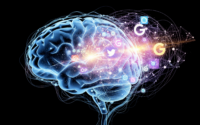ChatGPT vs ChatLLM: A Comparison of Conversational AI Models
With the rise of AI-powered conversational agents, two terms frequently come up in discussions: ChatGPT and ChatLLM. While ChatGPT is developed by OpenAI and has gained widespread use, ChatLLM refers to a broader category of large language models (LLMs) specialized for chat, built by various companies such as Meta, Google, and Baidu. In this post, we’ll explore the key differences between these two types of models and what sets them apart.
Developer and Model Family
ChatGPT is part of OpenAI’s GPT family, a widely recognized and robust model for generating natural language. It has been fine-tuned for a wide range of conversational tasks. On the other hand, ChatLLM refers to any LLM specialized for chat, and its development can come from a variety of companies. These models often belong to different families such as LLaMA from Meta, PaLM from Google, or others.
Training Data and Capabilities
ChatGPT is trained on diverse datasets, which include books, websites, and other broad sources of information. This allows it to perform well across a wide array of topics and tasks. ChatLLM, depending on the developer, may be trained on more region-specific or domain-focused data, which can make it more specialized for certain types of conversations. However, some models may also lack the general flexibility seen in ChatGPT.
Multimodal Capabilities
In recent iterations, ChatGPT supports multimodal inputs and outputs, meaning it can understand and generate responses based on text, images, and potentially more. ChatLLM models vary in this regard. While some can handle text-only inputs, others are advancing towards similar multimodal capabilities, depending on their development focus.
Performance and Customization
ChatGPT is recognized for its high accuracy and well-rounded conversational abilities. It performs exceptionally well in general-purpose natural language tasks. In contrast, ChatLLM models may offer more customization options, especially when open-source implementations are involved. This allows developers to fine-tune the models for specific tasks or industries more easily.
Accessibility and Pricing
ChatGPT is widely accessible through OpenAI’s API and platforms like the ChatGPT app. Its pricing structure typically involves subscription plans, such as ChatGPT Plus. ChatLLM models, however, are available through various sources, with some offering open-source alternatives that come at lower costs or even free of charge.
Updates and Strengths
ChatGPT receives regular updates and refinements from OpenAI, ensuring it stays at the forefront of conversational AI. Its strengths lie in its polished performance across a wide range of contexts. ChatLLM models, depending on their developers, may not receive the same frequency of updates but can excel in specific use cases where customization or a lightweight solution is required.
Ultimately, the choice between ChatGPT and ChatLLM depends on the user’s specific needs. ChatGPT is ideal for those seeking a powerful, general-purpose conversational agent. Meanwhile, ChatLLM models offer flexibility for those looking for a customizable or more specialized solution. Both options contribute to the evolving landscape of AI-driven conversation, each bringing unique advantages.


